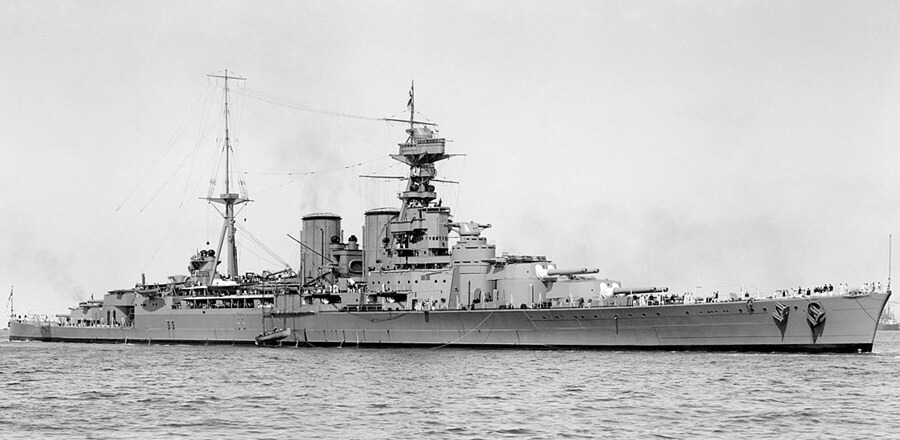
The Denmark Strait Battle
May 24, 1941: The Battle of Denmark Strait. The German battleship Bismarck, in consort with heavy cruiser Prinz Eugen, attempt to reach the North Atlantic to prey upon vital Allied shipping to and from England. The allied ships tasked with interdicting the pair were the Royal Navy battlecruiser, HMS Hood, and the brand-new battleship, HMS Prince of Wales.
On board Prince of Wales was a Canadian, Stuart Paddon, who was assigned to the sensitive role of radar officer. He was in charge of the ship’s ten radar suites and given the infancy of naval radar at this point in the war, it was quite the responsibility. (As an aside, Canadian university students were recruited to fill similar positions; England was short on electronics specialists due to many of the British students having went to the Royal Air Force to man the more famous land-based radars that played such a key role during the Battle of Britain.)
The Denmark Strait battle is perhaps best known for the sinking of HMS Hood, a ship made famous for her graceful lines and numerous tours abroad to show the British flag. Although she was the epitome of First World War capital ship design, encapsulating both the speed of battlecruisers with the armament and side armour of battleships, she was nonetheless a product of a time when plunging gunfire was rare. As a result, her deck armour was relatively thin, and her many duties during the interwar period meant she never had the chance to address that deficiency.
With a lucky shot, one of Bismarck’s 15″ shells plunged deep within Hood’s midships magazines and caused an enormous explosion that ripped her in half. Within minutes, she had all but disappeared; the only signs of her existence being plumes of smoke and 3 survivors out of her crew of 1418.
Although the Hood was sunk and the battle was a tactical victory for the Germans, the sacrifice of Hood’s sailors was not in vain because the Bismarck and Prinz Eugen were successfully prevented from reaching the vital convoy routes. Furthermore, the infamous Swordfish torpedo bomber attacks had jammed Bismarck’s rudder and further restricted the enemy’s movement.
Main photo: The Royal Navy battlecruiser HMS Hood in 1924.
More information:
To read about the battle from radar officer Paddon’s perspective, his recollection is available here: http://scholars.wlu.ca/cgi/viewcontent.cgi…(Note: Memories can be faulty, and there are some observations that do not corroborate with other historical sources.)
A brief video of the Bismarck during action can be viewed here, firing her 15″ batteries and 5.9″ secondaries: https://gfycat.com/MessyMasculineCorydorascatfish

